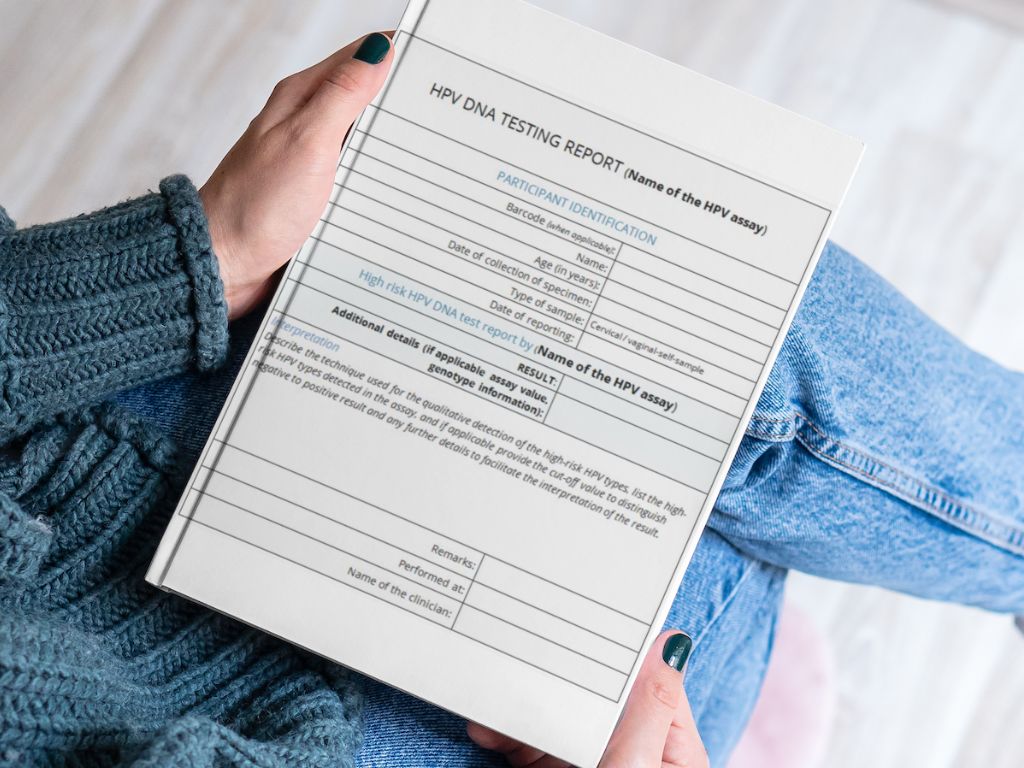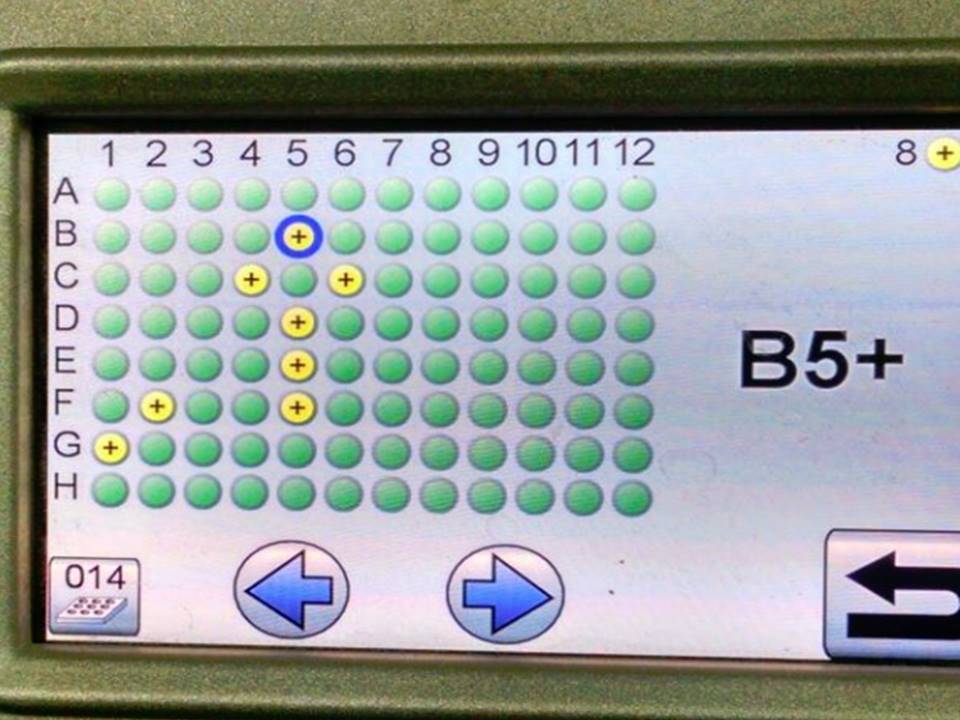Using Human Papillomavirus (HPV) detection tests for cervical cancer screening and managing HPV-positive women – a practical guide / Activity 6
Interpretation of HPV test results | Click on the pictures to magnify and display the legends |
The HPV test result may be negative, positive, or invalid.
A negative test result indicates that high-risk HPV was not detected in the sample by the test. Reassure the woman, and advise her to return for repeat screening after 5 years or 10 years depending on the screening protocol. Inform her about the common symptoms of cervical cancer, and advise her to report to a clinical facility if such symptoms appear. A positive test result indicates the presence of high-risk HPV in the sample. Most of the tests provide a cut-off value for test positivity. For example, the Hybrid Capture 2 assay has a cut-off value of 1, which is the ratio of relative light units (RLU) in the sample compared with positive controls. A sample with a ratio of 1 or more is considered positive. A sample with a ratio of less than 1 may still have high-risk HPV, but the viral load is too low to be of clinical significance. Many HPV tests simultaneously provide information on the presence of at least a few selected HPV genotypes (partial genotyping). If the sample is positive for high-risk HPV, such test results will at least indicate whether HPV16 or HPV18 are present in the sample, because these are the most oncogenic HPV types. Some of the tests may provide information on the presence of additional HPV types (e.g. HPV45). The next section describes further management of women with a positive HPV test result. An invalid test result usually means that the sample did not have adequate material or that the assay was not satisfactory. The woman needs to be recalled for repeat sample collection. If an invalid test result is obtained after self-collection of a sample, a provider should collect the next sample. Sample HPV test report:
|

